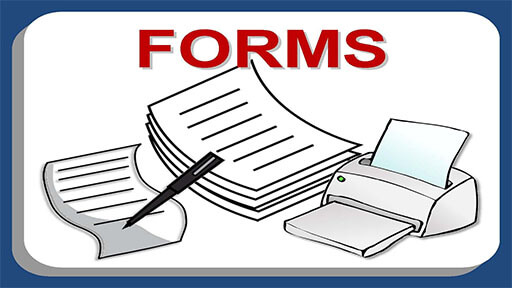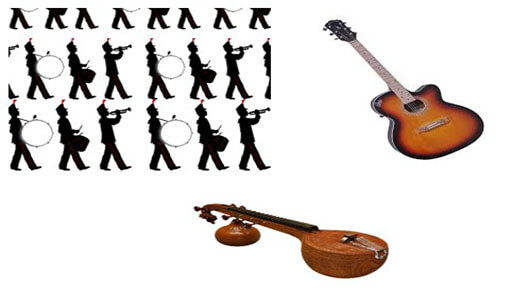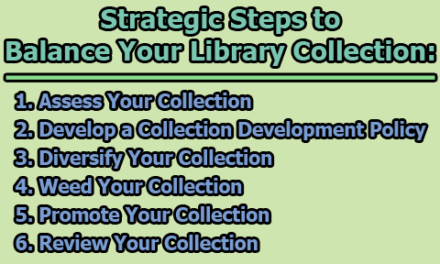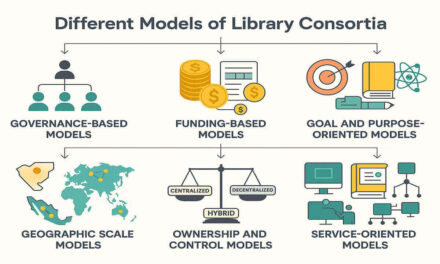Illustrative Matter for Exploring the Pictorial World of Knowledge:
In the vast realm of human knowledge, information is often conveyed through a combination of words and images. While visual illustrations are commonly perceived as pictures or photographs, the illustrative matter goes beyond the conventional definition. It encompasses a diverse array of visual aids, ranging from coats of arms to genealogical tables, maps to music elements, and much more. This article delves into the world of illustrative matter, exploring its various forms and the significance it holds in conveying complex ideas and information. Illustrative matter for exploring the pictorial world of knowledge.
Illustrative Matter: Beyond Visuals
Illustrative matter is a vital tool that expands the possibilities of communication beyond words alone. While it indeed includes traditional visual elements like pictures or images, it extends its reach to various other forms. For example, consider a coworker coming to work with a terrible cold, inadvertently spreading it to the entire office. This real-life scenario serves as an illustration to explain the concept of how a single individual’s actions can impact an entire group, even though it lacks a traditional visual representation.
Beyond this, illustrative matter also encompasses images and illustrations that decorate a text, helping to create a visually engaging reading experience. These images can take various forms, such as photographs, drawings, charts, graphs, and diagrams. By supplementing text with visual aids, authors and educators can effectively communicate complex ideas and concepts.
Coats of Arms: Emblems of Identity
Coats of arms have a rich historical significance, serving as distinctive heraldic designs for individuals, families, states, organizations, and corporations. Typically depicted on shields, surcoats, or tabards, a coat of arms consists of various elements that collectively form the full heraldic achievement. These elements include the shield itself, supporters (such as animals or figures on either side of the shield), a crest at the top, and a motto that represents the individual or entity’s values or beliefs.
Throughout history, coats of arms played a crucial role in identifying individuals on the battlefield, as they were prominently displayed on armor and banners. Over time, they evolved into symbols of pride and heritage, unique to each family or entity. Coats of arms are essential elements in the study of genealogy, helping to trace family lineages across generations.
Facsimiles: A Glimpse into the Past
Facsimiles are remarkable reproductions of historical items, such as books, manuscripts, maps, or art prints. The objective is to recreate the original source with utmost accuracy in terms of size, color, condition, and other material qualities. Scholars and researchers use facsimiles to study ancient texts or documents that may not be accessible due to preservation concerns or geographical constraints.
In museums and archives, facsimiles play a vital role in media preservation and conservation. They allow curators to showcase historical artifacts while preserving fragile originals. Facsimiles are typically produced in limited editions, often accompanied by detailed commentary to provide context and historical insights.
Forms: Documenting Information
Forms are structured documents designed to record specific information in a standardized format. They can be found in various contexts, from government paperwork to business transactions and survey questionnaires. Forms offer several advantages, including consistency in data collection, ease of record-keeping, and efficient data processing.
For example, tax forms are standardized documents used by governments to collect financial information from taxpayers. In business settings, various forms facilitate processes like employee onboarding, customer feedback collection, and inventory management. Forms serve as a crucial link between users and data systems, ensuring the accurate and organized flow of information.
Genealogical Tables: Unraveling Family Histories
Genealogical tables, also known as family history, are invaluable resources for tracing lineages and understanding familial connections across generations. Genealogists employ various methods, including oral interviews, historical records, and genetic analysis, to gather information about a family’s ancestry.
The result of their research is often presented in the form of charts or written narratives, showcasing family trees and kinship diagrams. These genealogical tables offer a clear and visual representation of a family’s history, shedding light on its origins, migrations, and historical events that shaped its members.
Maps: Visualizing Spatial Information
Maps have been instrumental in human history for understanding spatial relationships and navigating the world. They come in various forms, ranging from geographical maps depicting landscapes and physical features to thematic maps representing specific data or themes.
Geographical maps show terrain, rivers, cities, roads, and other important features, aiding in exploration and navigation. Thematic maps, on the other hand, focus on specific subjects such as population distribution, climate patterns, economic indicators, and more.
Additionally, celestial maps display the arrangement of stars and planets in the night sky, assisting astronomers in their observations and research. Genetic maps illustrate the arrangement of genes on chromosomes, contributing to our understanding of genetic traits and inheritance patterns.
Music: Expressing Emotions through Sound
Music, as an art form, has the unique ability to convey emotions and ideas through sound organized in time. With elements like pitch, rhythm, dynamics, timbre, and texture, musicians can create a vast range of compositions, each evoking a different emotional response.
From classical symphonies to contemporary pop songs, music has been an integral part of human culture and expression. It serves as a means of storytelling, reflecting social and historical contexts, and even acts as a universal language that transcends linguistic barriers.
Plans: Pathways to Achieving Goals
Plans are detailed diagrams or lists of steps designed to achieve specific objectives. Whether in the context of battle strategies, architectural designs, or project management, plans provide a structured approach to realizing goals effectively.
A battle plan, for example, outlines the tactical maneuvers and strategies that military commanders employ during warfare. In urban planning, architects and city planners use design plans to lay out infrastructure and spaces, ensuring a functional and aesthetically pleasing environment.
In the business world, plans are crucial for project management, delineating tasks, timelines, and resource allocation to achieve successful outcomes. Without well-defined plans, the path to success becomes uncertain and less efficient.
Portraits: Capturing the Essence of Individuals
Portraits are artistic representations of individuals, focusing on their faces and expressions. Through paintings, photographs, sculptures, or other mediums, artists aim to depict the likeness, personality, and mood of the subject.
Photographic portraits go beyond mere snapshots; they are composed of images carefully crafted to engage viewers with the subject’s emotions and personality. Artists and photographers often capture their subjects by looking directly at the viewer, establishing a deeper connection between the audience and the portrayed individual.
Portraits have been used throughout history to immortalize important figures, commemorate historical events, and document cultural identities. They serve as invaluable records of human history and emotion.
Samples: Representing Populations
In statistics and survey methodology, sampling involves selecting a subset of individuals from a statistical population to estimate the characteristics of the entire group. Statisticians use samples to draw conclusions about the larger population, a process known as statistical inference.
Sampling offers several advantages, including reduced cost and quicker data collection compared to measuring the entire population. However, it requires careful consideration of sample size, sampling method, and representativeness to ensure the validity of the findings.
For instance, political pollsters use random samples to predict election outcomes accurately. Market researchers rely on samples to understand consumer preferences and behavior, helping businesses tailor their products and services to meet customer needs.
In conclusion, Illustrative matter encompasses a vast array of visual aids that enrich human knowledge and understanding. From the historical significance of coats of arms to the preservation of ancient manuscripts through facsimiles, each form of illustrative matter serves a distinct purpose in enhancing communication and presenting complex information.
Genealogical tables and maps provide insights into lineage and spatial relationships, while music conveys emotions and cultural expressions through sound. Plans and forms facilitate organization and goal achievement, and portraits immortalize individuals and their stories.
With sampling techniques, researchers draw accurate conclusions about populations, making informed decisions in various fields. As technology continues to evolve, the illustrative matter will remain a powerful tool, enriching our comprehension of the world and its intricate facets.
Frequently Asked Questions [FAQs]:
What is the illustrative matter?
Illustrative matter refers to any form of visual representation used to decorate or clarify text. It goes beyond conventional images and includes a wide range of visual aids like charts, diagrams, graphs, and more.
How does illustrative matter enhance communication?
By combining visuals with text, illustrative matter helps convey complex ideas and information more effectively. It engages readers, enhances understanding, and makes the content more visually appealing.
What are coats of arms, and why are they significant?
Coats of arms are heraldic designs displayed on shields, representing individuals, families, organizations, and states. They hold historical and cultural significance, serving as symbols of identity, pride, and heritage.
What are facsimiles, and how are they used?
Facsimiles are accurate reproductions of historical items like books, manuscripts, and art prints. Scholars use them to study ancient texts, while museums use them for preservation and public display.
How do genealogical tables help trace family histories?
Genealogical tables present family trees and lineage charts, helping genealogists trace ancestral connections and understand the historical context of families.
What information do maps provide, and how are they used?
Maps provide spatial information, depicting landscapes, cities, roads, and more. They are used for navigation, geographical studies, and data visualization.
What are music elements, and how do they contribute to musical expression?
Music elements, such as pitch, rhythm, dynamics, timbre, and texture, combine to create diverse musical compositions, allowing musicians to express emotions and ideas through sound.
In what contexts are plans commonly used?
Plans are used in various contexts, including battle strategies, architectural designs, project management, and event organizing. They provide structured approaches to achieving specific objectives.
How do portraits capture the essence of individuals?
Portraits, whether in paintings, photographs, or sculptures, focus on the face and expression of a person, reflecting their personality and emotions. They serve as lasting records of individuals and historical figures.
What is the role of sampling in statistical studies?
Sampling involves selecting a subset of individuals from a population to estimate the characteristics of the entire group. It is used in various fields, including political polling, market research, and quality assurance.
How can the illustrative matter be effectively used in educational settings?
In education, illustrative matter can be used to engage students, simplify complex concepts, and make learning more enjoyable. It aids in visualizing information and enhances retention and understanding.
Where can I find illustrative matter resources for research or presentations?
Illustrative matter resources can be found in libraries, archives, museums, and online databases. Many websites offer free or paid access to high-quality images, charts, and diagrams.
What are the ethical considerations when using illustrative matter?
When using illustrative matter created by others, it is essential to respect copyright laws and provide proper attribution. Obtaining permission and ensuring fair use are critical ethical considerations.
How can I create my own illustrative matter?
There are various tools and software available for creating illustrative matter, depending on the type of visual aid you need. Graphic design software, presentation tools, and data visualization platforms are commonly used for this purpose.
Can illustrative matters be used in legal documents and official forms?
Yes, illustrative matters can be incorporated into legal documents and official forms to improve clarity and comprehension. However, it is essential to ensure that the visuals align with legal requirements and do not compromise the accuracy of the information conveyed.
How can I make my presentations more engaging using illustrative matter?
Incorporate relevant images, charts, and diagrams into your presentations to illustrate key points and break up text-heavy slides. Visual aids can capture the audience’s attention and enhance their understanding of the content.
Are there any cultural considerations when using illustrative matter?
When using illustrative matter in a cross-cultural context, it’s essential to be mindful of cultural sensitivities and appropriateness. Certain symbols, colors, or images may have different meanings or connotations in various cultures.
What are some best practices for using illustrative matter in research papers?
When using illustrative matter in research papers, ensure that the visuals are relevant, clear, and directly supporting the content. Include proper citations for images or data sources, and adhere to any copyright guidelines.
Can illustrative matter be used in online and digital publications?
Yes, the illustrative matter is commonly used in online articles, blogs, e-books, and digital publications to engage readers and enhance the overall reading experience.
How does illustrative matter contribute to marketing and advertising?
In marketing and advertising, illustrative matter plays a crucial role in capturing consumers’ attention, conveying brand messages, and illustrating product features or benefits. It can evoke emotions and influence consumer behavior.
Are there any emerging trends in the use of illustrative matter?
With advancements in technology, augmented reality (AR) and virtual reality (VR) are becoming popular for incorporating illustrative matter in interactive and immersive experiences.

Library Lecturer at Nurul Amin Degree College



















